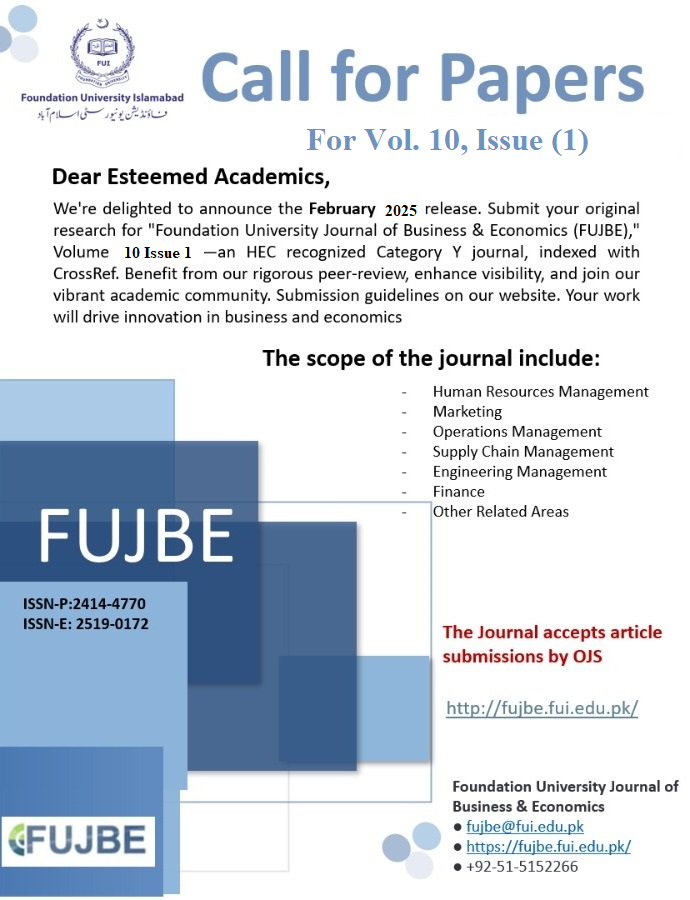Credit Channel of Monetary Transmission Mechanism: New Insight from SVAR-DAG Approach
DOI:
https://doi.org/10.33897/fujbe.v6i1.440Keywords:
Credit Channel, Direct Acyclic Graphs, Monetary policy, SVAR, JEL Classification: C30, E40, E52, E58Abstract
The credit channel of monetary transmission mechanism gains significant importance after global financial crises. The present study has investigated the credit channel for an emerging economy of Pakistan, which has an underdeveloped financial sector. The study has collected monthly data from June 2006 to June 2018 on credit to the private sector (CPRVS), interest rate, money supply, price level, and industrial production index. The study has contributed to the empirical literature by investigating the contemporaneous causal relationships among the variables. Further, the study has investigated the effectiveness of the credit channel of the monetary transmission mechanism. The study has employed the SVAR model along with direct acyclic graphs (DAG) to identify the covariance matrix.The study notes that the credit channel is ineffective in Pakistan, and it does not contemporaneously cause economic growth (EG).Further, EG causes credit supply to the private sector. Hence, when the economy grows, the financial sector develops, and commercial banks extend more credit to the private sector. The study also notes that the interest rate has no contemporaneous impact on the CPRVS. Moreover, for robustness check, we have estimated two SVAR models, one with a real discount rate as a measure of interest rate and the other is with the real lending rate, as it is more related to the credit supply. However, both proxies give the same results, which implies that our findings are robust. Hence, we can conclude that the credit channel is ineffective in Pakistan.



